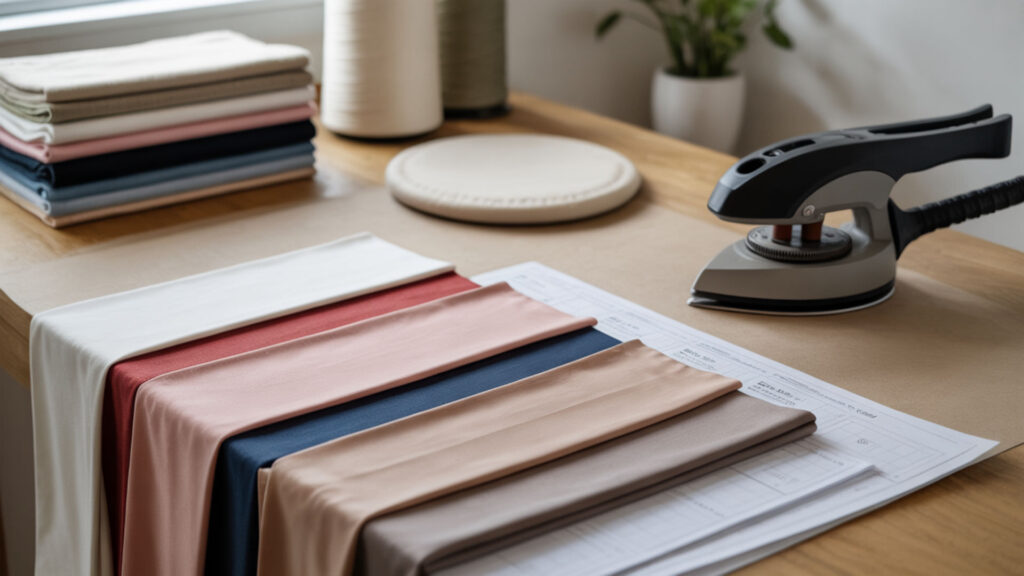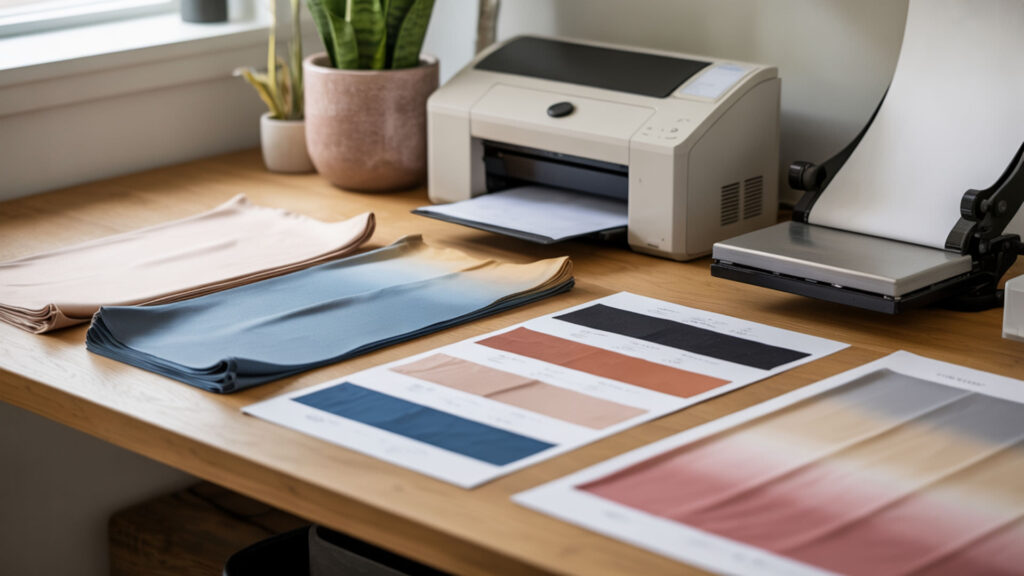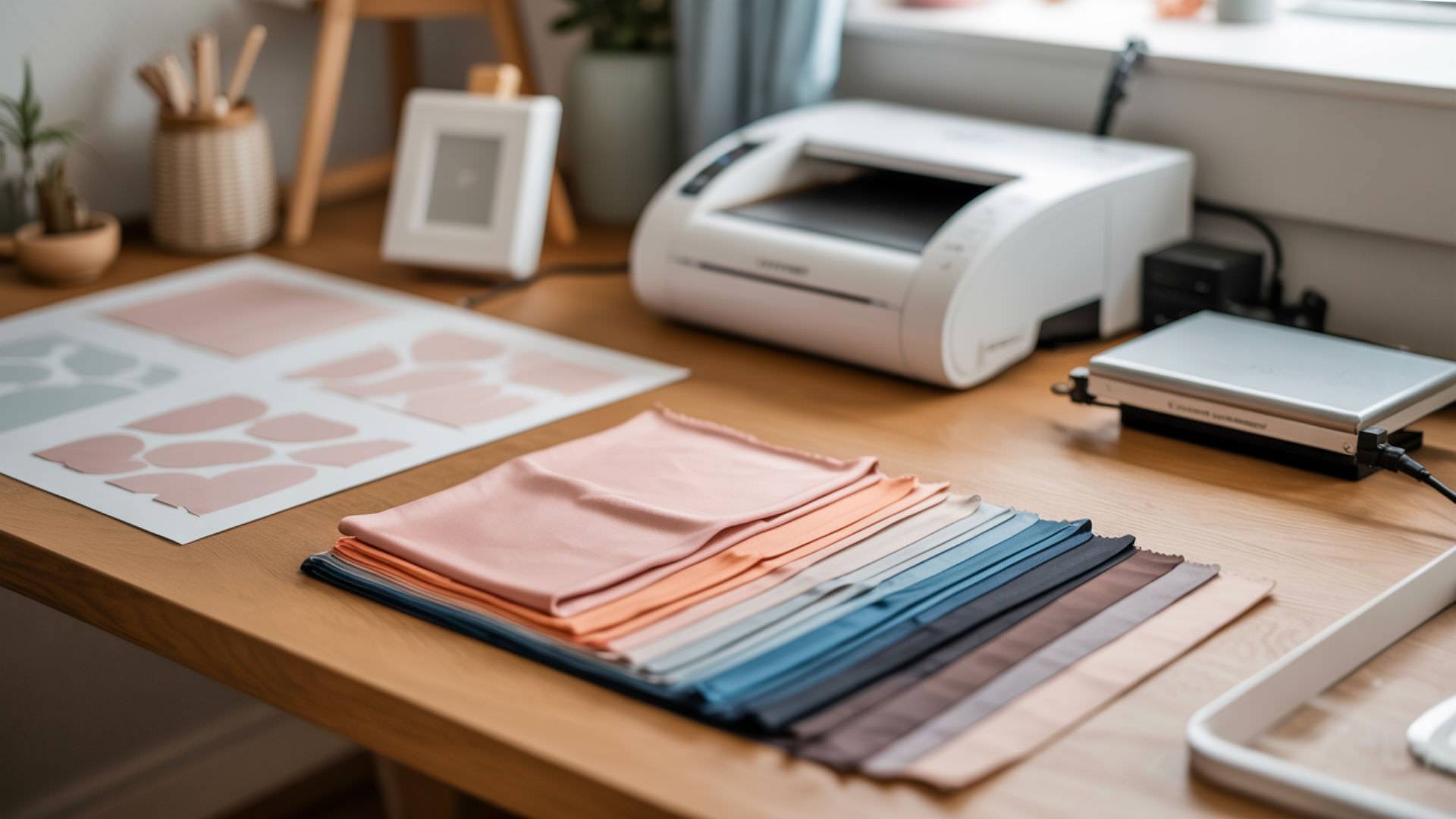Table of Contents
ToggleRayon presents unique challenges for sublimation printing because its cellulose fiber structure fundamentally differs from synthetic materials. Unlike polyester, rayon cannot bond with disperse dyes because cellulose fibers lack the polymer content required for dye molecule penetration. The cellulose structure also absorbs moisture readily, which causes blurred or patchy sublimation results when heat and pressure activate the transfer process without proper preparation or coating.Understanding why rayon behaves differently than polyester helps explain material selection for sublimation projects. Cellulose fibers have a rigid hydrogen-bonded structure that does not soften under heat like thermoplastic polymers, preventing sublimation dyes from penetrating rayon fibers. [1]
Key Takeaways
- Rayon requires a sublimation coating or polymer spray to achieve any meaningful color vibrancy because the cellulose fibers reject disperse dyes.
- Polyester-rayon blends with at least 50-65% polyester content produce significantly better results than 100% rayon without requiring coating.
- Lower press temperatures between 280-350°F are essential to prevent scorching, shrinkage, and permanent fiber damage on rayon fabrics.
Can 100% rayon accept sublimation transfers after pretreatment?

Pure rayon cannot disperse dyes through standard sublimation because the cellulose fiber structure lacks polymer chains for dye bonding. Applying a sublimation coating creates an artificial polymer layer on the fabric surface that allows disperse dyes to bond to the coating rather than the rayon fibers themselves. Without this coating, 100% rayon produces extremely faded results that wash out within one to two cycles, making the coating step mandatory for any commercial-quality output on pure rayon garments.Elastic fibers such as spandex are particularly sensitive to elevated temperatures, which can permanently alter their stretch recovery and mechanical performance.[2]
Do polyester blends perform brighter than 100% untreated rayon for sublimation results?
Fiber blends containing polyester dramatically outperform untreated rayon because the polyester fibers within the blend accept disperse dyes at the molecular level. A 65% polyester / 35% rayon blend produces vibrant, durable prints comparable to pure polyester, while a 50/50 blend creates a softer, vintage aesthetic with acceptable durability. Rayon-dominant blends below 50% polyester yield progressively weaker results that fade quickly with washing. This same principle explains why polyester content matters so much when sublimating on any cellulose-based fabric.
Can bamboo-rayon fibers hold sublimation ink with proper coating first?
Bamboo-rayon fabrics respond to sublimation coating similarly to standard rayon because both share cellulose-based fiber structures. Applying a sublimation coating adds the polymer layer necessary for partial dye bonding, though results remain less vibrant than polyester-containing blends. The coating allows bamboo-rayon to achieve visible designs suitable for decorative or limited-wash applications, but durability remains lower than polyester alternatives even with proper coating application.
Can mixed blends like rayon-polyester or rayon-spandex be sublimated successfully?

Rayon-polyester blends sublimate successfully when the polyester percentage reaches at least 50%, with 65% or higher producing results nearly identical to pure polyester fabrics. The polyester content determines color vibrancy because only those fibers accept disperse dyes permanently. Spandex adds complexity because it is heat-sensitive and prone to distortion at standard sublimation temperatures, requiring careful balance between achieving dye transfer and protecting the elastic fibers from permanent damage.
Does traditional vinyl heat transfer bond better on coated rayon than sublimation alone?
Vinyl HTV bonds mechanically to fabric surfaces rather than chemically penetrating fibers, making it more reliable on cellulose-based materials like rayon. While sublimation coating creates a polymer surface for dye bonding, vinyl adhesive simply grips the fabric weave regardless of fiber composition. For rayon garments, vinyl HTV applied at 280-305°F often produces more durable results than sublimation on coated surfaces, particularly for designs requiring sharp edges and solid color blocks.
⫸ Click Here For Best Selling Sublimation Printers And Products ⫷Can spandex-rayon blends handle sublimation heat without distortion later?
Spandex fibers distort under the high heat required for optimal sublimation transfer, while rayon scorches at temperatures above 300°F. This thermal sensitivity combination makes spandex-rayon blends particularly challenging because both fiber types suffer damage before disperse dyes fully activate. Reducing press temperature to 280-320°F and extending press time to 45-60 seconds can achieve partial transfers, but results remain compromised compared to polyester-dominant fabrics that tolerate standard 380-400°F settings.
How do you sublimate on rayon step-by-step?

Sublimating on rayon requires modified techniques to protect the heat-sensitive fibers while achieving acceptable color transfer. Using proper sublimation coating products designed for cellulose fibers makes the difference between faded results and vibrant prints.
- Pre-wash the rayon garment in cold water to remove any sizing and pre-shrink the fabric before printing.
- Apply sublimation coating spray evenly across the print area, holding the can 6-8 inches from the fabric surface.
- Allow the coating to dry completely, typically 15-30 minutes depending on humidity levels.
- Set your heat press to 280-320°F—significantly lower than standard polyester settings to prevent scorching.
- Pre-press the coated area for 3-5 seconds to remove moisture and create a flat surface.
- Position the sublimation transfer face-down on the coated area and secure with heat-resistant tape.
- Cover with parchment paper or a Teflon sheet to protect both the transfer and press platen.
- Press for 45-60 seconds at medium pressure, extending time to compensate for the lower temperature.
- Remove carefully and peel the transfer paper while warm, checking for complete coverage.
- Wait 48 hours before washing to allow the coating-dye bond to fully cure for maximum durability.
Can rayon withstand heat press temperatures required for sublimation or vinyl transfers later?

Rayon exhibits significant thermal sensitivity and begins scorching or developing a permanent shiny appearance at temperatures above 300°F. Standard sublimation temperatures of 380-400°F cause rayon to weaken, shrink, or burn outright. Successful heat pressing on rayon requires reduced temperatures between 250-280°F for vinyl applications or 280-320°F for sublimation with coating, along with shorter press times and always using a protective cover sheet between the press and fabric.
Is low-temperature pressing safer to prevent rayon scorching or permanent press marks?
Lower press temperatures significantly reduce scorching risk and prevent the shiny marks that appear when rayon fibers are damaged by heat. Pre-pressing helps remove moisture that can cause steam damage, while extending press time compensates for the reduced thermal energy available for dye transfer or adhesive activation. Testing on an inconspicuous area before committing to the full print reveals how the specific fabric responds to your temperature and time settings.
What temperature range works best for sublimating on polyester-rayon blends without fading?
Polyester-rayon fiber blends require balancing the polyester’s need for heat activation against the rayon’s thermal sensitivity. Blends with 65% or higher polyester content can tolerate 350-375°F for 30-45 seconds, achieving good color vibrancy while protecting the rayon fibers from severe damage. Lower polyester percentages require proportionally lower temperatures, with 50/50 blends working best around 320-350°F to prevent the vintage fading effect from becoming too pronounced.
Do polyester-based transfer papers perform better on rayon blends than 100% rayon prints alone?
Transfer results on fiber blends depend entirely on the polyester percentage rather than the transfer paper itself. Polyester fibers in the blend permit partial disperse dye penetration proportional to their percentage, while rayon fibers reject most dye vapor regardless of transfer paper quality. A high-quality transfer on 100% rayon without coating produces worse results than a basic transfer on a 65% polyester blend. Both rayon and cotton share this dependency on fiber blends containing sufficient polyester for successful sublimation.
Ready to sublimate custom rayon garments with confidence?
Success with rayon sublimation depends on accepting its limitations and working within them strategically. Sublimation coating provides the only reliable method for achieving visible designs on pure rayon fabrics, while polyester-blend selection offers better results with less preparation. Matching your expectations to the material’s capabilities—vibrant and durable on high-polyester blends, softer vintage effects on rayon-dominant fabrics—ensures customer satisfaction and reduces rework from unrealistic output goals.
Frequently Asked Questions
Can layered transfers outperform direct sublimation on 100% rayon in long-term vibrancy?
Layered vinyl transfers typically outperform direct sublimation on uncoated rayon because vinyl bonds mechanically to the fabric surface rather than requiring fiber penetration. Multiple thin vinyl layers build opacity without the thermal sensitivity issues that affect sublimation coating durability. For designs requiring long-term vibrancy on rayon, vinyl HTV applied at reduced temperatures around 280°F provides more reliable results than attempting sublimation on inadequately receptive fibers.
Does repeated pressing improve or damage sublimation clarity on rayon fibers over time?
Repeated pressing damages rayon more than it improves sublimation results because each heat cycle compounds thermal sensitivity effects. The fibers progressively weaken, shrink, and develop permanent shine with each exposure to press temperatures. If initial results appear too light, starting fresh with a new garment and adjusted settings produces better outcomes than re-pressing, which risks ruining both the print and the fabric structure.
Does rayon shrink when exposed to sublimation or heat-press temperatures later?
Rayon shrinks noticeably when exposed to heat press temperatures, with fiber swelling and contraction occurring even at moderate settings. Pre-washing in cold water before sublimation helps minimize additional shrinkage during pressing, but some dimensional change remains inevitable. Accounting for 3-5% shrinkage when sizing garments and designs prevents alignment issues after the heat press cycle completes.
Can rayon fabrics fade faster from washing than polyester-heavy sublimation blends later?
Sublimation on rayon fades significantly faster than polyester blends because the coating-based bond lacks the permanence of true fiber penetration. Moisture absorption during washing causes fiber swelling that disrupts the surface coating where dyes reside. Washing inside-out in cold water on gentle cycles extends print life, but coated rayon typically shows noticeable fading after 10-15 washes compared to 50+ washes on polyester-dominant blends.
Is rayon unsafe or unreliable for high-heat transfer printing compared to synthetic blends later?
Rayon is unreliable for standard high-heat transfer printing because its thermal sensitivity creates a narrow working window between insufficient activation and fiber damage. The fabric weakens above 300°F and burns at 480°F, while optimal sublimation occurs at 380-400°F—temperatures incompatible with rayon’s safe operating range. Synthetic blends containing polyester tolerate these temperatures without degradation, making them substantially more reliable for consistent commercial production.
References
- Forest products laboratory. (n.d.). US Forest Service Research and Development. https://research.fs.usda.gov/fpl
- Heat and flame protection. (2023, November 13). Textile Protection And Comfort Center. https://textiles.ncsu.edu/tpacc/heat-and-flame-protection/














